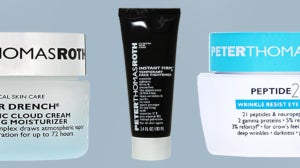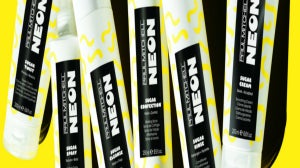
Used in skincare for decades, niacinamide rarely gets the limelight - being more of a back-up singer than the main act until recently - however, we believe that this little number is ready for its moment centre stage. In this article, we’ll be shining the light on how niacinamide affects your skin, whether it’s right for your skin type, and what skin care products you may want to try.
So, without further ado, here’s everything you need to know about niacinamide.
What Is Niacinamide?
Although it might sound like something dreamed up in a lab, niacinamide is actually just one form of vitamin B3. Also known as nicotinamide (you can see why that name didn’t catch on in skincare), it’s water-soluble, making it ideal for topical applications. Interesting fact - it can also be produced by the body when eating niacin-rich foods including nuts, legumes and fish.
How Does It Work?
While there hasn’t been a huge deal of research published on niacinamide as a stand-alone ingredient, scientists do have their theories about how it works to improve our skin. Niacin (and therefore niacinamide) is a precursor to two chemical compounds created in our bodies, NAD+/NADH and NADP+. These two molecules play a key role in the chemical reactions which take place in our skin cells - repairing damage, maintaining normal function and creating new cells. Some of these actions wouldn’t be able to take place at all without niacinamide first being present in the body.
Essentially, by giving your skin a boost of niacinamide, your body has access to more NAD+ and NADP+, allowing your skin cells to function at their best and fight certain stresses that can impact the skin. The particular stresses targeted by NAD+ and NADP+ are referred to as free radicals.
What is a Free Radical?
99% of the human body is made up of hydrogen, carbon, nitrogen and oxygen atoms. Oxygen is one of the main elements that compose the human body. Atoms contain protons, neutrons and electrons. Free radicals are the result of oxygen molecule splits within the body. when an 02 (oxygen) molecule splits into single atoms with unpaired electrons. Because electrons prefer to be paired, the free radical atoms search the body for electrons they can pair with. Unfortunately, this results in oxidative stress, damaging the proteins, cells or DNA that come into contact with these rogue atoms. Ultimately, this can lead to premature ageing, alongside a host of other conditions. But NAD+ is fantastic at neutralising these, offering up an electron to free radicals and effectively neutralising them.
Who Can Benefit From Using Niacinamide?
The most well-documented benefits of niacinamide for skincare are its anti-inflammatory properties. It has also been suggested that just a 2% dose of niacinamide might inhibit oil production. It also causes less irritation compared to other treatment options, making it particularly good for those with sensitive skin.
Topically applied niacinamide has been suggested to increase ceramide production. Ceramide molecules are lipids which maintain the skin barrier (making up over 50% of skin composition). Skincare products which contain ceramides - or boost the production of ceramides - can help improve skin texture, reducing the appearance of fine lines, wrinkles and skin dehydration.
It’s no surprise then that niacinamide is such a popular ingredient in a whole host of skincare products.
What Products Contain Niacinamide?
If you think niacinamide may be the answer to some of your skincare woes, we’ve got great news - it’s an active ingredient in a huge range of serums and moisturisers. Most skincare guides recommend that a concentration of 2-10% gives best results, so the higher up the ingredients list you spot it, the better. Here are a few suggestions for common skin troubles.
Oily Skin
If you’re struggling to keep your blemishes in check, Cosrx AC Collection Lightweight Soothing Moisturizer may just be the answer to your prayers. With soothing propolis, aloe and niacinamide, it offers fantastic hydration for skin.
Uneven Skin Tone
For a great all-round moisturiser for an uneven skin tone, we recommend PCA Skin Moisturisers Clearskin, which combines niacinamide with vitamin A and chamomile extracts to soothe and calm. Not only will it brighten your complexion, but it also reduces pigmentation, uneven skin tone, whilst extracts of marigold, lemongrass and cucumber purify and refresh the skin.
Sensitive Skin
Remember those anti-inflammatory properties we talked about earlier on? Well, they’re not only beneficial for blemishes! Anyone with redness should try Peter Thomas Roth Skin To Die For Redness-Reducing Treatment Primer, which uses natural calming ingredients to not just camouflage, but reduce redness.









